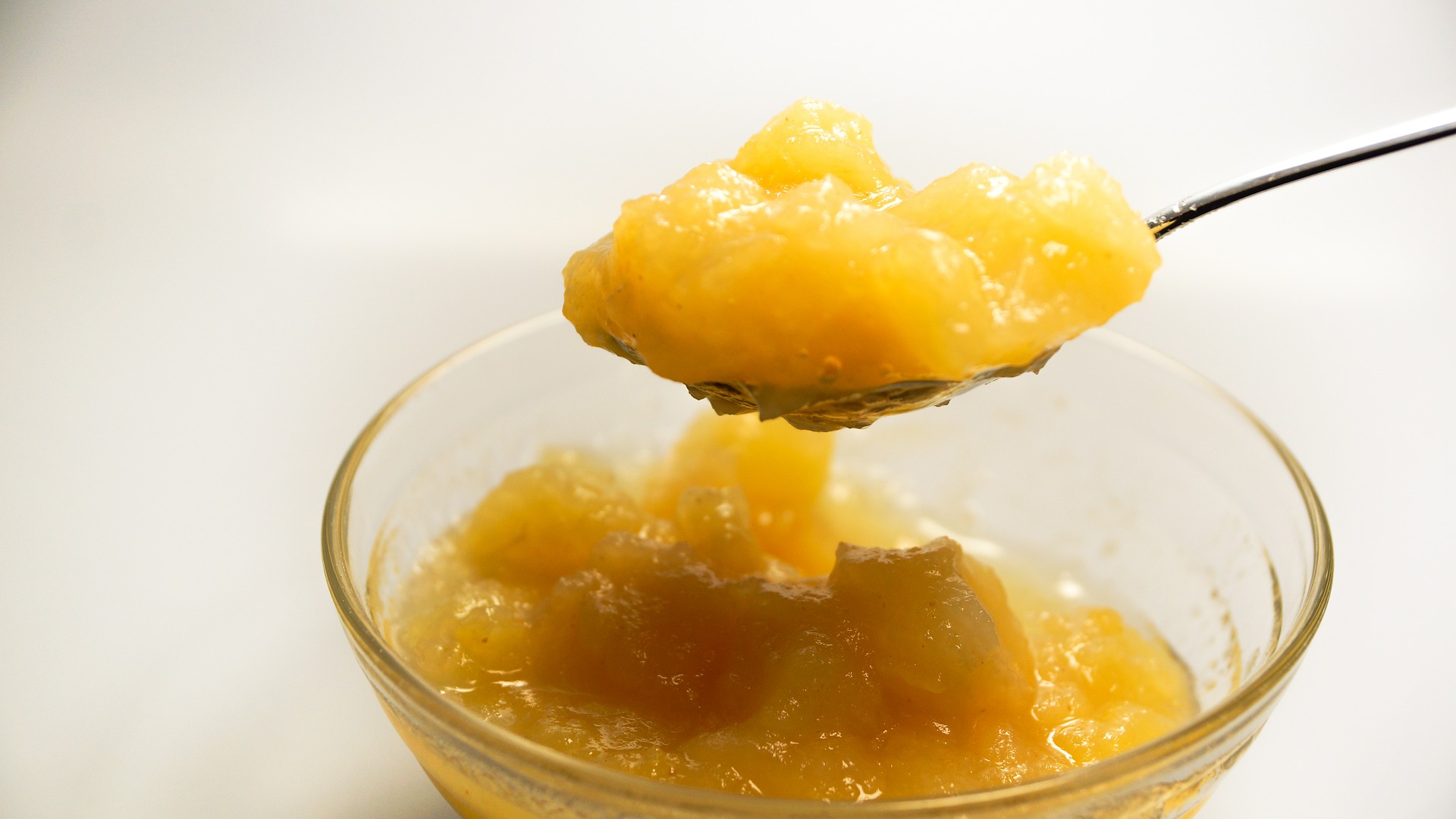I shouldn’t have complained about a lack of information on the history of hash browns – there is significantly less data out there on the history of applesauce.
As I always mention, if you have additional or conflicting information, do please feel free to comment or email.
Applesauce: It’s wholesome, kid-friendly, and helps with digestion. This magical puree of apples is often sweetened with cinnamon, and paired with a meat dish, such as pork.
Although applesauce is said to have originated in the mid-1700s, the practice of preparing sauces with apples dates back to medieval times in Europe. As with apples themselves, applesauce ranged from sweet to tart, and could accompany many different foods.
Prior to refrigeration, applesauce was an inexpensive and convenient way to preserve apples for several months at a time. This proved helpful for getting through a long winter or a drought.
According to FoodTimeline.org – always a great reference – the Oxford English Dictionary credits the first use of the word applesauce in print to Eliza Smith’s Compleat Housewife, 9th edition, 1769. It accompanied a recipe for duck.
Indeed, many of the first applesauce recipes were completed by adding meats. It was recommended to cook apples with fatty meats, so the sharp apple flavor balanced out the fat.
Arguably the most common meat to pair with applesauce is pork. A cookbook author of 1700s, Hannah Glasse, advocated for serving roast pork with “some good applesauce.”
Today, applesauce continues to be a versatile food, often served as a side dish with pork for adults, or as a sweet snack for kids.
Mark Bittman suggests using a food mill if making your own applesauce at home. In doing so, you don’t have to peel the apples; the peel contributes both color and flavor.
Bittman says, “Most people think of applesauce as a sweet, almost dessert-like condiment. And it can be. But I prefer a neutral approach that allows for savory seasonings.”
He recommends pairing any of the following with applesauce:
- Black pepper
- Cumin, coriander, or caraway
- Minced fresh chile (ex: jalapeno), red pepper flakes, or cayenne pepper
- Chipotle chiles, dried or canned (with a little adobo sauce)
- Minced ginger
- Nutmeg
- Cloves or allspice
- Any spice blend (ex: jerk seasoning)
- Roasted garlic

Comments
2 responses to “Food history: applesauce”
This is just what I was looking for when I did a search on the history of applesauce. I wanted to give readers on my Facebook page, Cooking with Whole Grains & Real Whole Foods, a little taste of applesauce yore, since the recipe of the day featured the homemade comestible.
Incidentally, the best apple pie I ever ate used freshly ground dried red chilis in place of the cinnamon and no added sugar. It was amazing.
Thank you so much!
There’s a classic children’s book called Understood Betsy by Dorothy Canfield. It was written in 1916 but set several decades earlier. In it, Betsy, a little city kid transplanted to live with relatives in Vermont, learns to make applesauce for dinner. It was a nightly activity, similar to a child learning how to make a simple salad for dinner today. From the tone of the book, it was quite common to make up a small pot of applesauce each night to go with the meal, using an apple or two per person. In fact, in the story, it’s such a matter-of-fact activity, like wiping feet on the mat or sweeping the floor, that it must have been something common to most readers at the time. It opened my eyes to what the world was like for my grandparents and great-grandparents. I never dreamed it was so easy–not a lot harder than making oatmeal!